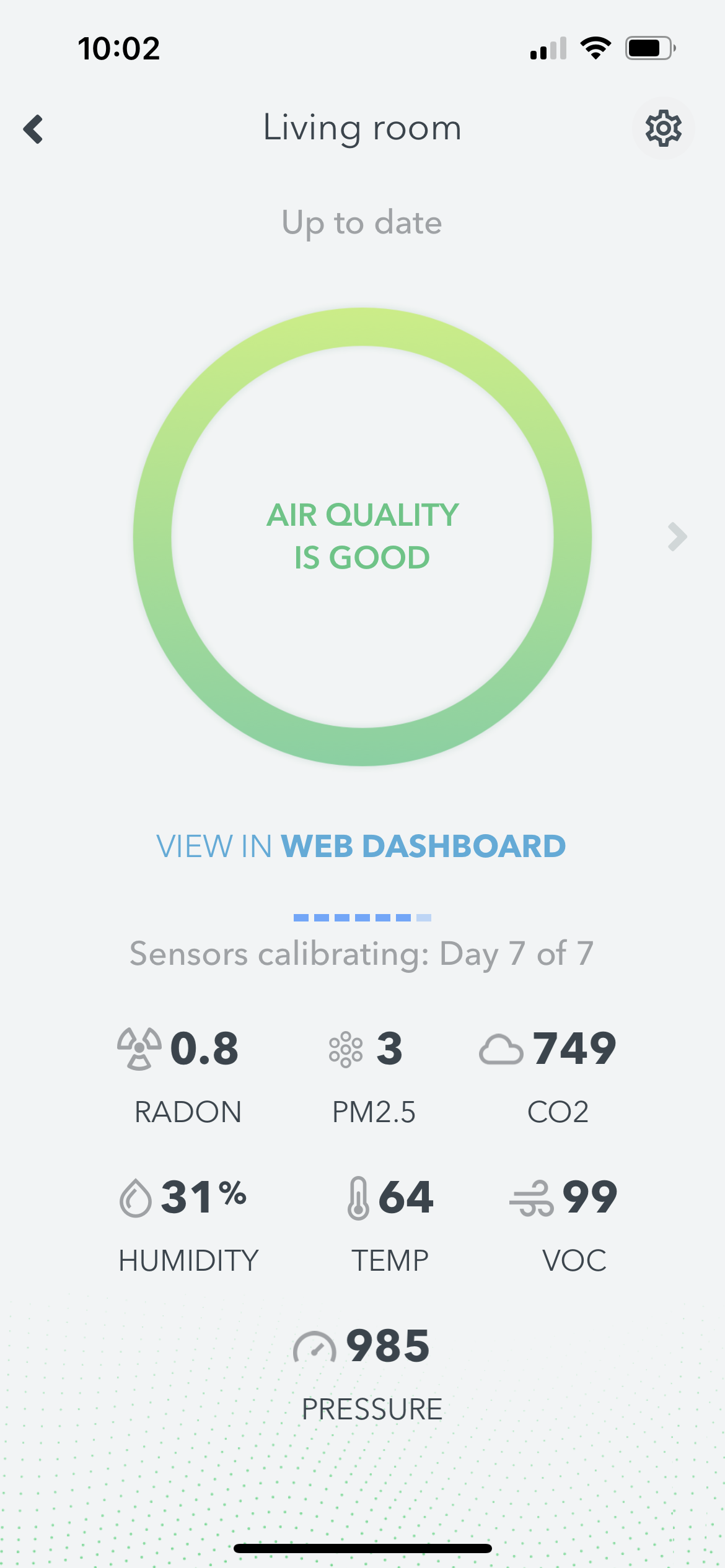The products and services mentioned below were selected independent of sales and advertising. However, Simplemost may receive a small commission from the purchase of any products or services through an affiliate link to the retailer's website.
If you’ve been wondering about the air in your home, an air quality monitor is a worthy investment.
While an air quality monitor is important for anyone who benefits from clean air (i.e: everyone), they are especially beneficial for those with allergies or health concerns. If you are concerned about CO2 levels, volatile organic compounds (VOCs) or radon levels that may be lurking in the soil under your home, you’ll want to take a look at this Airthings 2960 View Plus Monitor.
The Airthings 2960 View Plus Monitor tracks everything from temperature and humidity to particulate matter (dust, dirt, smoke, etc.), VOCs (kitchen gases, fumes, cleaning products) and radon gas. Battery-powered and used alongside a free app, the monitor keeps track of your air quality 24/7, letting you know if you need to clean your air.
While the monitor doesn’t actually clean the air for you, it will tell you when you need to. You can clean your air by purchasing an air purifier, changing your furnace filters, vacuuming, dusting or if weather allows, simply opening the windows. The Airthings 2960 View Plus is available on Airthings’ website and Amazon for $299.99.
To give it a try, Airthings sent me the 2960 View Plus monitor to set up in my home.
It comes ready to go right out of the box, and even includes batteries. The instructions say it’s best to put it in the room you use the most, so I sat it on the TV stand in living room. Next, I downloaded the app, connected it to my Wi-Fi and it began working instantly.
The levels of everything monitored — especially radon — fluctuate, so you’ll need to wait at least seven days for the sensors to calibrate before reading it. I started checking the monitor on day seven, looking through the app to see what data it gathered over the previous week.
I noticed the levels for almost everything changed throughout the calibration, but my air was consistently in the “fair” or “good” category. My radon levels were always in the good range, but my CO2 and VOC levels varied depending on the weather and what time of day it was. The CO2 levels were much better when my living room was empty than when I was in the room adding CO2 to the air by breathing. I also noticed the CO2 levels were lower when I had windows open on a warm-ish day, and higher during an ice storm when the heat was running.

I eventually noticed that the VOC levels changed when I dusted and vacuumed, first going up, then going down, which likely was the result of stirring up dust, then eliminating it. I actually found it pretty fascinating, and it made me realize that even though I vacuum every day, I could probably dust a bit more.
The monitor works better the longer it’s in your home, so I expect it to become more sensitive to my air quality over time. Overall, the monitor works exactly as described, and I had no issues using it or understanding the data in the app. Because it is quite expensive, however, I would only recommend it to someone with allergies or if you suspect there is something wrong with your air.
If you believe you have high radon levels, it honestly may be a must-have, as too much radon has some pretty dire consequences, such as lung cancer, according to the CDC.

If you want to monitor your air levels, but are only concerned about things like CO2 and VOCs, there are a handful of monitors that are less expensive. The Airthings-292 Wave Mini is priced at just $79.99 and monitors a variety of things, including VOCs, humidity, temperature and mold risk.
You’ll also find this Temtop Air Quality Monitor, priced at $89.99 with a $10 coupon you can clip at checkout. The Temtop monitor has more than 500 5-star reviews, with customers saying it’s easy to use and offers peace of mind.
This story originally appeared on Simplemost. Check out Simplemost for additional stories.


